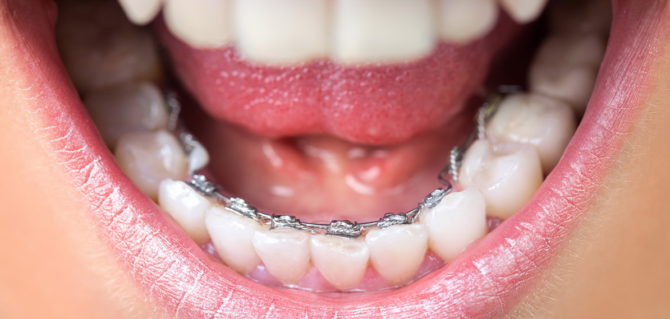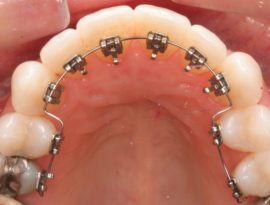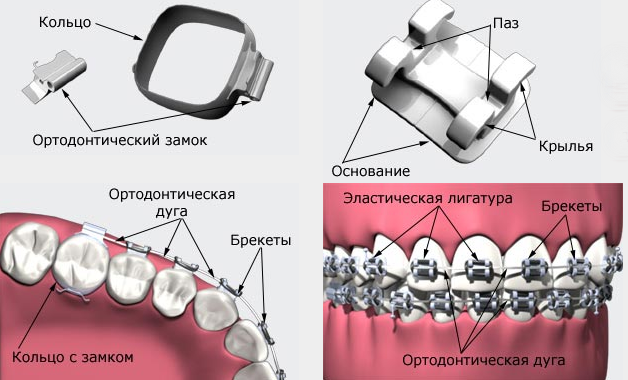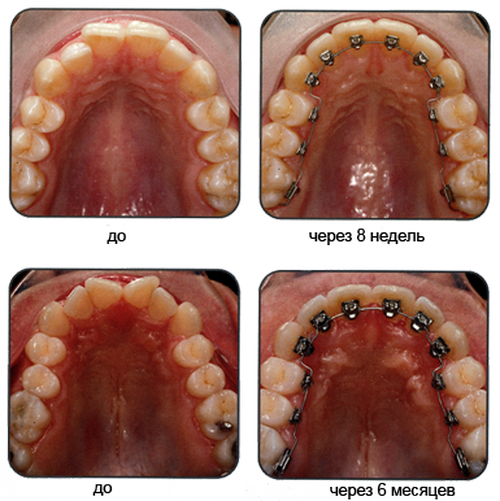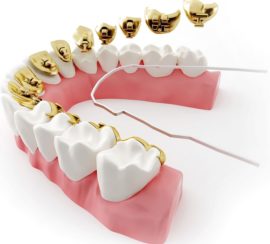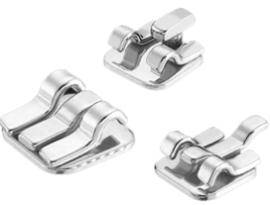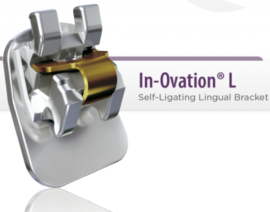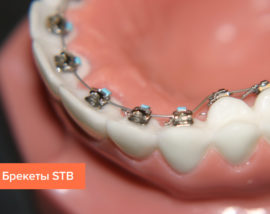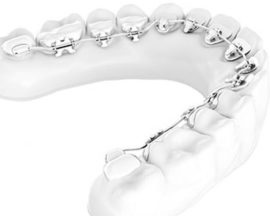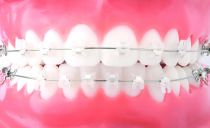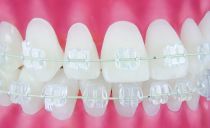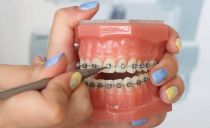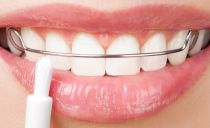Lingual braces for bite correction: pros and cons, installation, types and cost
Lingual bracket systems are popular orthodontic constructions, the use of which makes it possible to eliminate occlusion defects in a short time and without attracting the attention of others. The effectiveness of the devices is similar to the effectiveness of the treatment of anomalies of the dentition with traditional devices, and the aesthetics are much higher, since lingual braces are attached to the inner surface of the teeth.
Content
General characteristics of lingual bracket systems
The use of the first prototypes of modern designs to correct the incorrect position of the teeth was described in the medical literature of the 80s of the XX century. In the list of their shortcomings, experts noted that patients experience discomfort during conversation and eating. Improved products installed by the patient today are devoid of the above disadvantages.
The name of the devices is associated with their location: the design is fixed on the inner surface of the teeth. Braces are in close proximity to a language that is pronounced in Latin as lingua. Accordingly, the lingual (related to the muscular organ of the oral cavity) systems are lingualis - lingual. Features of the installation of devices in the oral cavity determine their popularity.
Key elements of devices
The composition of all types of lingual bracket systems includes 3 structural links:
- The main elements (plates), the installation of which is carried out using a special fixing composition.
- Arcs of various elasticities and varying cross sections connecting braces.
- Grooves located in the middle zone of the main elements. Passing through the holes in the considered links of the arc, the orthodontist fastens the plates.
An important additional element of some lingual bracket systems is a special design - a rubber (metal) ring mounted on 6 or 7 molars. The device performs a supporting function for connecting products and is equipped with a special lock.
All of the above items can be seen in the photo:
Advantages and disadvantages
Correction of the bite with lingual braces differs from traditional devices with a number of advantages, including:
- high efficiency of orthodontic devices of internal type;
- accelerated adaptation process;
- accessibility of treatment: a large assortment allows you to choose the right system for any patient;
- the ability to correct deep occlusion of the dentition;
- the absence of factors that injure the tissues of the lips and cheeks.
If enamel demineralization of the inner side of the teeth occurs during the removal of jaw anomalies, the dark spots that appear remain invisible to the environment.
The short list of disadvantages of treatment with lingual braces includes the duration of the installation process, the high cost (in comparison with the prices of external structures), and the presence of contraindications for use. Among the shortcomings of internal bracket systems, some patients note difficulties in carrying out hygiene procedures and difficulties with choosing an orthodontist: only a few specialists have the required qualifications.
The nuances of care
Professional cleaning of braces is carried out by specialists of medical clinics.The use of special devices, such as brushes and toothpicks, contributes to the preservation of the cleanliness of structures and dentitions at home. You can use flosses, irrigators and a number of other tools. The subtleties of hygiene procedures should be consulted with a doctor.
Popular models
Lingual (internal) bracket systems are classified into classic and ligatureless. The former are equipped with links for fixing arcs, the latter have self-locking mechanisms. The installation of ligature-free bracket systems allows you to securely fasten the elements connecting the plates without engaging the rings.
The basis for an additional systematization of devices that help correct malocclusion is the technology of their manufacture. The characteristics of the 5 most popular models of internal orthodontic appliances are shown in the table.
| Title and photo | Features |
|---|---|
|
Incognito |
Innovative braces from the German company 3M Unitek differ from analogues in structure, composition of materials (alloys with the addition of gold are used), smelting and installation process. Recommended for patients suffering from individual intolerance to metal products. The treatment of pathologies of the structure of the dentition with Incognito devices takes an average of one and a half years. Among the minuses is the high cost. |
|
Forestadent 2d |
Developed by Forestadent from Germany. A kind of internal braces, used to correct simple bite pathologies. It is not used to treat children under 11 years of age. This model is comfortable in operation, relatively short adaptation period, low price. The height of the braces does not exceed 1.64 mm. |
|
In-ovation l |
Designs of the American company GAC Dentsply, custom-made. Recommended to correct severe tooth occlusion abnormalities. Wearing systems does not violate diction. |
|
Stb |
Stb braces are manufactured by ORMCO Corporation (USA). The designs are compact (4.57 long and 1.5 mm wide) in size, so they do not cause communication difficulties. Patients are offered both classic and ligatureless modifications of Stb braces. For the manufacture of products, high-quality dental steel is used, which significantly reduces the price of devices. |
|
WIN |
Novelty of the market of orthodontic services. They are made of cobalt and chromium alloys by specialists of the German corporation DW Lingual Systems GmbH. Hypoallergenic, comfortable to use. Recommended for patients of any age. |
Before choosing a system, it is recommended to see photos of the structures, get acquainted with the patient reviews after treatment. Your doctor will answer all your questions.
Briefly about the steps for installing lingual braces
The algorithm for the manipulations preceding treatment with invisible bracket systems consists of 4 stages. The first and most important of them is the rehabilitation of the oral cavity. In the presence of carious lesions, tartar and gum disease, lingual braces are not installed.
After therapy, the attending physician will prescribe the patient an X-ray examination. Pictures help to identify anomalies in the structure of the jaws, establish the causes of occlusion, justify the choice of corrective devices.
The next stage is the removal of plaster casts. Manipulation requires special care: the accuracy of the manufacture of orthodontic products depends on the quality of its implementation. The production of bite-correcting structures is the final stage of the preparatory procedure.
Installation of any type of lingual braces is carried out according to the following scheme:
- A plate is attached to each unit of the dentition.
- A brace fixing arc is passed through the grooves.
- The product is fastened by using ligatures or special mechanisms.
The health check and correction of the system are carried out according to a schedule pre-established by the doctor. If it is necessary to correct all the teeth, first attach the plates and arches on the lower jaw, and after 14 days on the upper jaw.Time is allotted to the patient getting used to the device.
The result obtained after wearing braces is recorded using retainers.
Contraindications
The doctor can refuse the patient to install the orthodontic system when identifying:
- complete disregard for hygiene procedures;
- gum disease (gingivitis);
- periodontitis, periodontal disease, caries;
- allergic reactions to the materials used;
- structural features of the jaw: narrow bones, increased density of dental units.
Lingual braces are not involved in the presence of a patient's history of mental pathologies, bruxism. Among other contraindications are low crown height, pregnancy, childhood, the appearance of a psychological barrier (expressed in increased salivation), and malfunctioning of the temporomandibular joint.
Cost of constructions
The cost of lingual braces varies from 50 to 500 thousand rubles. A significant fluctuation in prices is due to the patient's place of residence (capital, provincial district) and the policy of the management of the clinic's services.
In addition to these factors, the formation of the final price list is affected by:
- model of braces used;
- the material of their manufacture (the most expensive are gold and titanium braces);
- the cost of manufacturing, periodic correction, removal.
The average production cost of 1 system is 65 thousand rubles. After fixing the braces, in addition to 25 thousand for the installation, you will have to regularly pay for the work of the orthodontist: each examination will cost 5-6 thousand rubles. Removal of plates is estimated at least 3 thousand 500 r. Estimated prices for retainers - 5-7 thousand rubles.
Lingual braces are expensive designs. But to refuse to wear them for this reason should not be, since with their help you can even cope with complex malocclusions.

